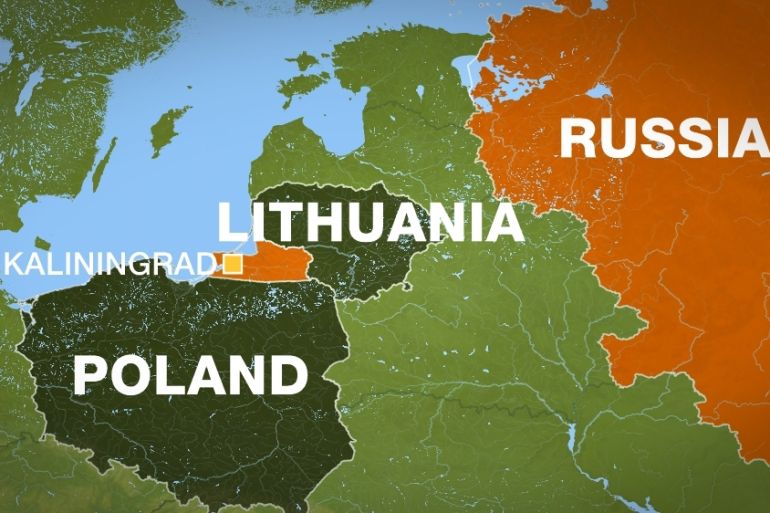Russia: New missiles in Kaliningrad answer US ‘shield’
Russian exclave to receive new S-400 and nuclear-capable Iskander missile systems in response to NATO’s defence system.

Russia plans to install S-400 surface-to-air missiles and nuclear-capable Iskander systems in the exclave of Kaliningrad, in retaliation for the NATO deployment of its so-called “defence shield” in Eastern Europe.
The RIA news agency reported on Monday that Viktor Ozerov, chairman of the defence committee in the Federation Council, Russia’s upper house of parliament, said that Moscow was forced to react to the planned US missile shield erected so close to the country.
Keep reading
list of 4 itemsHong Kong’s first monkey virus case – what do we know about the B virus?
Why will low birthrate in Europe trigger ‘Staggering social change’?
The Max Planck Society must end its unconditional support for Israel
|
|
“As response measures to such threats, we will have … to deploy additional forces … This reinforcement includes deployment of S-400 and Iskander systems in Kaliningrad,” Ozerov was quoted as saying.
Kaliningrad is located between Poland and Lithuania.
Also on Monday, President Vladimir Putin also raised the issue of how Russia should respond to what it perceives as the threat from US-led forces in Eastern Europe.
“Why are we reacting to NATO expansion so emotionally? We are concerned by NATO’s decision-making?” RIA quoted him as saying in an interview for a documentary to broadcast on Russian TV later on Monday.
“What should we do? We have, therefore, to take countermeasures, which means to target with our missile systems the facilities, that, in our opinion, start posing a threat to us,” Putin said.
WATCH – Will NATO’s missile shield spur a new Cold War?
The Kremlin says the shield’s aim is to neutralise Moscow’s nuclear arsenal long enough for the United States to strike Russia in the event of war. Washington and NATO deny that.
Pavel Felgenhauer, a defence analyst of Novaya Gazeta newspaper, told Al Jazeera from Moscow that the decision on the deployment of the missiles was made years ago, and announcing it now could be aimed at creating “a bit of mischief”.
“This deployment of ballistic missiles with longer range, and anti-aircraft missiles with a longer range too, was pre-planned years before, but announcing it now is maybe trying to create a bit more tension … inside NATO,” he said.
He also said the prospect of a good relationship with the incoming administration in Washington was not as welcome in Moscow as it might be believed.
“There is a seriously very powerful party here in Moscow that doesn’t want agreement with [US President-elect Donald] Trump. They want some level of continued confrontation with the United States, to preserve the procurement and defence budget that is, at present, on high levels.”
Russia has previously said it periodically sends Iskanders to Kaliningrad, but until now, it has said these were routine drills. Moscow has not linked the moves explicitly with what it calls a NATO military build-up on its western borders.
The US launched a new ground-based missile defence system in Romania in May and an additional anti-missile platform is being built in Poland.
Russia says the missile system breaches a 1987 deal with the US and threatens peace in Europe.
|
|